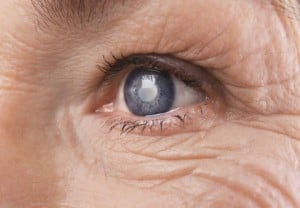Glaucoma is a leading cause of blindness. It can strike at any time. The top eye specialists at Austin Eye explain why it is crucial to have your eyes checked for glaucoma regularly.
is a leading cause of blindness. It can strike at any time. The top eye specialists at Austin Eye explain why it is crucial to have your eyes checked for glaucoma regularly.
Glaucoma
Glaucoma refers to a collection of eye diseases affecting the optic nerve. Generally, fluid builds up in the front of the eye. The pressure from this build-up causes optic nerve damage.
1. No Warning Signs
Unlike some eye conditions, glaucoma may come on suddenly, with no warning signs. That’s the case with closed angle glaucoma. This form of glaucoma occurs when the iris (the colored part of the eye) is close to a person’s drainage angle. If the drainage angle becomes totally blocked, internal eye pressure skyrockets. Without emergency treatment, blindness can be the consequence. Ask your eye doctor about this acute form of glaucoma if experiencing:
- Halos or rainbow rings around lights
- Suddenly blurred vision
- Severe eye pain
- Nausea and vomiting
- Headache
Open-angle glaucoma is more common than the closed angle type, and happens gradually. Rather than a complete blockage, the drainage angle is clogged. There is no pain accompanying open angle glaucoma, and vision problems take longer to manifest. Preliminary signs of vision loss include patchy blind spots. Without treatment, peripheral vision loss, or “tunnel vision syndrome,” may develop.
2. Everyone is at Risk
When it comes to glaucoma, age is not a factor. Anyone can develop glaucoma. While older people are more susceptible, babies are born with it and it appears in young adults. Younger people of African-American descent are particularly vulnerable.
Although anyone may develop glaucoma, it is more common in the Black community. While cataracts are the leading cause of blindness among Black Americans, glaucoma is next. Six to eight times more Black people are afflicted with glaucoma than White people. Hispanic and Asian people also have a higher incidence of glaucoma.
3. Already Affected But Unaware
According to the Glaucoma Research Foundation, about 3 million Americans have glaucoma, but only half of them are aware of it. That is because they have not yet experienced symptoms of the disease.
4. There is No Cure
Currently, there is no cure for glaucoma. When caught early, further vision loss is avoidable. Prescription eyedrops can reduce the odds that higher eye pressure will lead to glaucoma. However, vision that has already been lost will not be regained.
5. Medical Conditions Can Contribute to Glaucoma
Patients with certain medical conditions are at higher risk of developing glaucoma. These conditions or diseases include:
- Diabetes
- Extreme nearsightedness or farsightedness
- Heart disease
- High blood pressure
- Long-term use of corticosteroids
- Sickle cell anemia
Contact Us
The only way to diagnose glaucoma is via a comprehensive eye examination. If you would like additional information about glaucoma, contact the eye care specialists at Austin Eye by calling our office at (512) 250-2020 to schedule a consultation.







